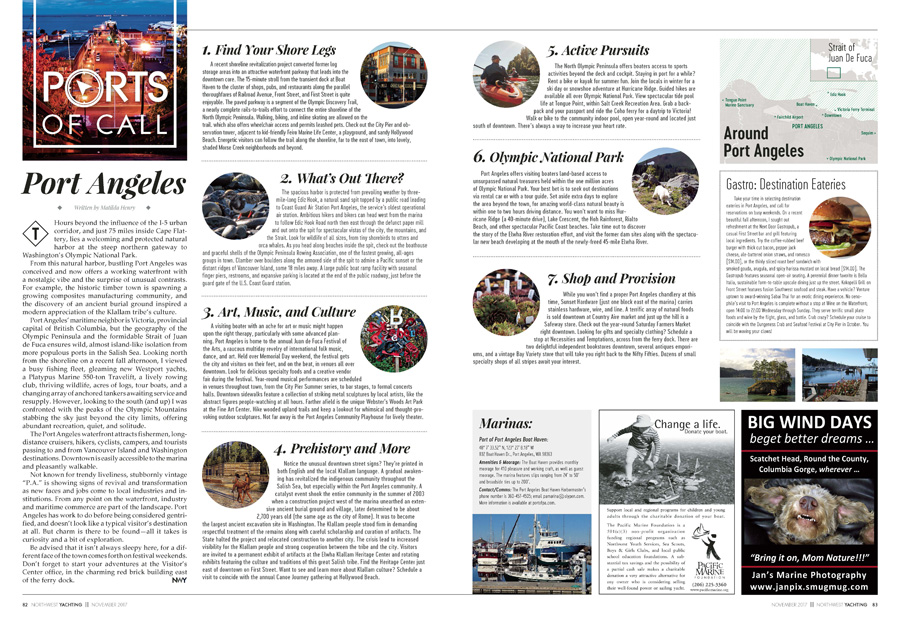Hours beyond the influence of the I-5 urban corridor, and just 75 miles inside Cape Flattery, lies a welcoming and protected natural harbor at the steep northern gateway to Washington’s Olympic National Park.
From this natural harbor, bustling Port Angeles was conceived and now offers a working waterfront with a nostalgic vibe and the surprise of unusual contrasts. For example, the historic timber town is spawning a growing composites manufacturing community, and the discovery of an ancient burial ground inspired a modern appreciation of the Klallam tribe’s culture.
Port Angeles’ maritime neighbor is Victoria, provincial capital of British Columbia, but the geography of the Olympic Peninsula and the formidable Strait of Juan de Fuca ensures wild, almost island-like isolation from more populous ports in the Salish Sea. Looking north from the shoreline on a recent fall afternoon, I viewed a busy fishing fleet, gleaming new Westport yachts, a Platypus Marine 550-ton Travelift, a lively rowing club, thriving wildlife, acres of logs, tour boats, and a changing array of anchored tankers awaiting service and resupply. However, looking to the south (and up) I was confronted with the peaks of the Olympic Mountains stabbing the sky just beyond the city limits, offering abundant recreation, quiet, and solitude.

The Port Angeles waterfront attracts fishermen, long-distance cruisers, hikers, cyclists, campers, and tourists passing to and from Vancouver Island and Washington destinations. Downtown is easily accessible to the marina and pleasantly walkable.
Not known for trendy liveliness, stubbornly vintage “P.A.” is showing signs of revival and transformation as new faces and jobs come to local industries and institutions. From any point on the waterfront, industry and maritime commerce are part of the landscape. Port Angeles has work to do before being considered gentrified, and doesn’t look like a typical visitor’s destination at all. But charm is there to be found—all it takes is curiosity and a bit of exploration.
Be advised that it isn’t always sleepy here, for a different face of the town comes forth on festival weekends. Don’t forget to start your adventures at the Visitor’s Center office, in the charming red brick building east of the ferry dock.
